Fitness is about resistance — running against the wind, firing up muscles against the dead gravity of weights, fortifying the mind against that nagging feeling that a park bench and a scoop of ice cream would probably be just a bit more enjoyable.
For Tonal, resistance isn’t just a value proposition, it’s the very ingredient that conditioned this startup to become one of the darlings of the fitness tech world.
The numbers speak for themselves. The company has raised about $200 million to date from venture capitalists and is becoming a household name with a $2,995 wall-mounted device that employs a digital weight system that can emulate various traditional gym stations. Since Tonal launched in August 2018, the company has carved out a reputation among fitness enthusiasts seeking a strength-training solution at home that saves on space without compromising serious weight-lifting capabilities.
As at-home fitness sales have boomed during the pandemic, Tonal equipment has been one of the beneficiaries, seeing its sales surge 800% from December 2019 to December 2020. The company also announced a partnership with Nordstrom this month which will place 50-square-foot sales stations in the women’s activewear department of at least 40 Nordstrom stores across America, bringing the total number of Tonal physical locations to 60 by the end of 2021.
Like all great athletes though, Tonal’s visible victories belie its massive exertion against the resistance of the world to innovation. Aly Orady, the company’s founder and CEO, had to overcome his own burnout and weight gain while kindling the energy to strike his own path. The company that would become Tonal had to fight through multiple VC rounds of skeptical investors ready to say that two-letter word that stops all progress.
It’s that resistance and its ability to overcome barriers that makes understanding Tonal’s story so compelling.
A founder lifting the weight of the past
The morning after Christmas in 2013, Orady woke up feeling downright abysmal. Over the past 17 years or so, he had toiled as an engineer at companies like Samsung, Sun Microsystems, HP and three enterprise startups, work that had taken a heavy toll on him. His corporate exertions had left behind a slew of health problems; he had become grossly overweight and had developed Type II diabetes and sleep apnea.
“It felt like I was heading toward this point of no return, and I just wasn’t going to be able to reclaim my health if I didn’t do something about it,” he recalls.
The only viable path Orady saw to fixing the situation was a major lifestyle change. A few days later after the holidays, he dialed back his hours as a full-time consultant for Samsung’s TV and display division — a role that meant frequent trips to Korea — and embarked on an ambitious workout plan involving four hours of exercise a day six days a week, usually split between mornings and evening, plus intermittent fasting two days a week.
Many mornings, Orady woke up at 6 a.m. and drove to a Gold’s Gym in San Francisco, where he initially hit the elliptical and also went for outdoor bike rides. He scoured the internet and read books about strength training, and the more he worked out, the more he integrated strength training into his six-days-a-week workout schedule until strength training became the core of his routine. Over the course of nine months in 2014, Orady lost a whopping 70 pounds, all while winding down his consulting work with Samsung.
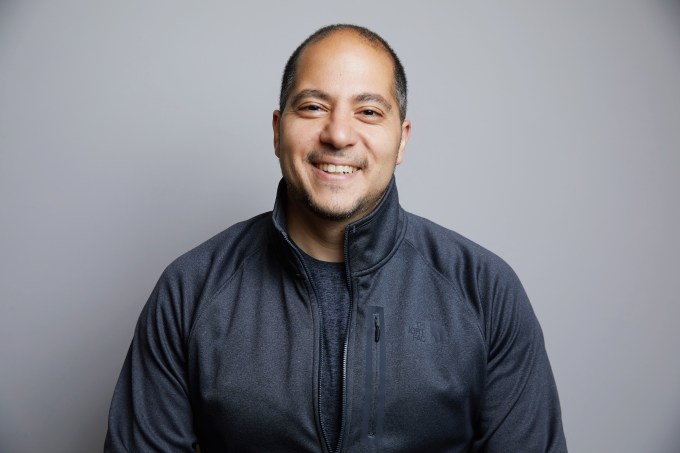
Yet, although he’d already made significant progress getting in shape — and the results truly spoke for themselves — Orady loathed trekking to the gym each day and wished he could do the same workout at home. Perched on a gym bench one day in March 2015, Orady found himself staring at a cable crossover machine, a 5 foot by 3 foot by 7 foot gym mainstay that lets users perform various exercises with removable weight plates.
“I was looking at this thing, and I realized the reason this thing was so big was because it relied on big metal plates and gravity to work,” he explains. “I thought to myself, if I could replace those big metal plates and gravity with electricity, I could shrink it down and create something really small.”
That was his cue. That same month, Orady founded RiptLabs, a name he would later change to the simpler and catchier moniker, Tonal.
The many reps of product iteration
The same day Orady observed that cable crossover machine, he began brainstorming ways he could bring weight stations into the home while cutting out most of the bulk. Traditional gym stations often use large, unwieldy weight plates to offer enough resistance for strength training. But what if, Orady thought, he could devise a product that swapped out those big metal plates for something smaller and more compact and bundled that technology with intelligent software that tracked a user’s workout?
“I bet if we could make electromagnetics work, it would be completely revolutionary,” says Orady. “It already is the technology that spins the motors in electric cars, propels high-speed trains … but no one had ever used it for this, and the questions started swirling in my head of whether we could use electromagnetics to make a device feel like a real weight machine.” Having received a bachelor’s degree in computer engineering from McMaster University, Orady had studied the theory of electromagnetics, but he had never actually developed electromagnetic devices in his prior work.
Orady ordered a number of parts online to build his first prototype, a rudimentary device strapped to a wooden workbench in his home that had a cable you pulled back and forth. But those first two versions of “digital weights” didn’t work very well — there was too much friction when pulling the cables and not enough magnets to replicate a wide range of weight like traditional gym equipment. The first version contained one magnet and a usable range of 25-40 pounds, while the second prototype used dozens of magnets, which allowed the resistance to be generated by the magnets themselves and not as much from the cables.
After two more iterations, he had managed to create his own kind of electromagnetic technology that created resistance comparable to weights. By then, the prototype had reached a point where he felt the device replicated the feeling of doing some weight station movements like single-arm cable rows and bicep curls.
A marathon of investor meetings
Parallel to working on the prototype that would one day become Tonal, the RiptLabs founder started an arduous nine-month process of pitching investors. Orady was an enterprise guy with an enterprise rolodex, having worked at three enterprise infrastructure startups and also serving as an advisor at Mayfield Fund for six months in 2013. He pitched his vision of a compact at-home strength-training product, but investors simply scoffed at the idea.
Their immediate objection was that the fitness market was already crowded with at-home devices from upstarts like Peloton (which had been founded a few years previously in 2012) as well as long-time fitness equipment stalwarts like ProForm, Nautilus and NordicTrack. Why should fitness buffs care about yet another fitness product?
Then there was the challenge of hardware. VCs have traditionally loathed hardware investments, given their large upfront capital requirements, the vagaries of consumer demand, the challenges of building a supply chain and the technical risk of successfully crafting a product. That latter risk was intensified here, since Orady didn’t just need to get the hardware to work, but also the software and content to make the whole experience come together.
Yet, even if he could prove the market was ready for a new product and that it could be built, there was a more fundamental objection: Why should Orady, a long-time enterprise hardware engineer, be the one to build it and bring it to market?
“I would sit down with this rough prototype — this amazing thing I invented, which I felt broke the laws of physics — but the average investor would look at me like I was crazy,” Orady recalls. “’You can’t be serious,’ one said. ‘You’re a brilliant technologist. I’ll give you money — just build me something that bolts into the rack in a data center instead.’”
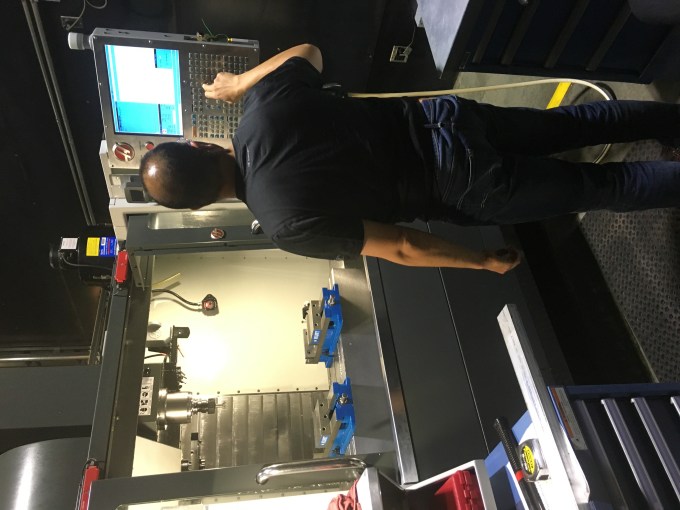
He persisted in his pitch despite investor hesitation, resisting any urge to return to what he knew and staying focused on his newfound dream for the future.
“You’re going from connection to connection, and you’re bouncing around, which is interesting because I think a lot of founders are shy to share their story, but the truth is, networking is the only way you’re going to get there,” contends Orady.
One of those bounces proved critical by 2015. Thanks in part to that six-month stint at Mayfield nearly two years prior, one of the fund’s partners Tim Chang, who focused on areas including consumer internet, digital media, e-commerce, as well as health and wellness, made an introduction to Bolt. Bolt at the time just happened to be one of the few VCs who had chosen to specialize in hardware investments, and the investors there led RiptLabs’ first $250,000 check.
Orady eventually found and convinced other investors who saw the potential in his work and a market opportunity. The fitness market was unequivocally crowded, but no one was offering a product quite like what Orady had in mind. In October 2015, he closed RiptLabs’ $250,000 seed round, and by April 2016, he said he closed an additional $1.5 million in seed round funding with investors like Rick Marini joining Mayfield and Bolt around the table.
Receiving that first check from Bolt, as well as access to the firm’s hardware labs and an office chock full of other hardware-focused entrepreneurs, proved validating for the RiptLabs’ chief executive. Yet he also realized that this seed round was just a small fraction of what he would need to eventually get his product into the market.
“I think at the end of the day I knew that it was gonna take millions of dollars to get this off the ground, and this was just the first of many, many steps,” adds Orady.
Seeking alpha (users)
With capital in the bank, Orady focused on growing his startup and continuing to refine the product. He hired four employees — one electronics engineer, one mechanical engineer, one software engineer and one designer — who developed the device with him and created basic software that counted the number of repetitions performed on the machine.
For his birthday in July 2016, he asked employees for a different kind of gift. Dubbed “The Birthday Challenge,” the goal was to devise a prototype of the RiptLabs’ product that mounted to the wall — much like the current Tonal product does — with arms on the left and right side that moved up and down, allowing users to perform a wider variety of weight movements. (The previous prototype only supported one cable, or weightlifting for one arm.)
Once it developed that prototype, the startup began a small alpha customer trial a few months later that October in a San Francisco apartment and handed apartment keys to 12 people — friends or friends of friends — who could use the machine whenever they pleased. In exchange for working out on the device, the startup filmed their workouts and interviewed them for feedback afterward.
The clock continued to tick though, and Orady needed more cash. The device was still far from launch, but now that investors could see, feel and actually use it to some extent helped them understand the workout experience Orady was building toward. With a refined prototype in hand, he paved the way for the company’s $11 million Series A — a round which included Shasta Ventures and Next Play Capital — which closed roughly a year after the company’s previous seed round.
Not content to stand still
By now, more than two years had passed since the start of RiptLabs and nearly four since Orady stepped back from his corporate life. While the company’s hardware product was converging toward a release model, that merely led to the next daunting challenge: creating the content that would make exercising with the machine on a regular basis enticing for users.
In March 2017, Orady reached out to Ryan Vance, a content programming veteran who had previously worked at Discovery creating shows for the HGTV and DIY networks as well as led content for Fitbit Coach, formerly an app called FitStar which had been acquired by Fitbit in 2015. Fitbit had IPO’ed that year and grown to a company with well over 1,000 employees — it was hardly the scrappy, brisk-moving startup it began as. While he wasn’t actively looking for a new role, Vance began receiving inbound interest from small startups where he could once again develop content from the ground up.
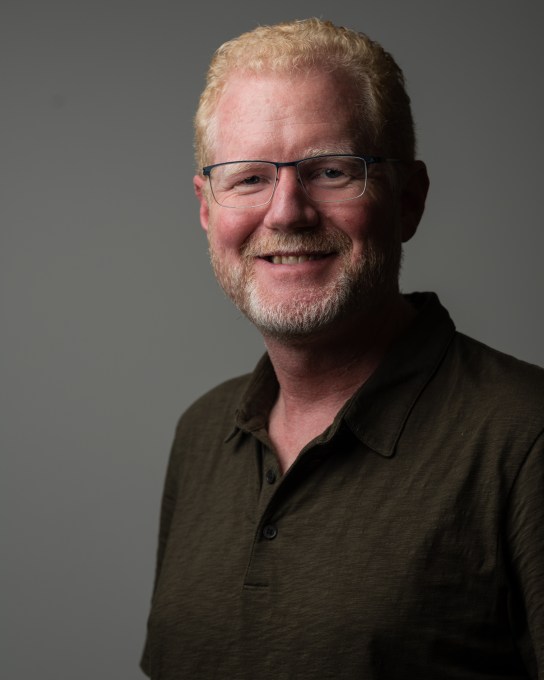
During his early meetings with Orady, the pair met at RiptLabs’ offices at 1074 Folsom St., near 7th and Folsom in San Francisco’s SoMa neighborhood. Largely bereft of furniture, the offices were functional at best, with homeless people often slumped in the doorway fast asleep. Vance would listen intently as Orady sketched out his vision for the startup and explained the still rough prototype hanging on a wall nearby.
“With its metal-leaf-like features and arms, It looked like a thing that might jump off the wall like a Terminator, like something from a dystopian future,” Vance recalls. “But the magic moment for me was when I did my first workout. I was on the bench and, having the bench press bar in my hand, loading up 40 pounds, then 80 pounds, then 40 pounds on each side. Feeling that weight load up, change and fluctuate on the fly blew my mind.”
Both Vance and Orady proved to be on much the same page from day one. In its totality, they saw the device as one part hardware, one part software and content. Vance actually liked to think of the product as one big video game controller, where users pulled on it and interacted with weight classes taught by people on screen.
The big strategic question though was who to put on screen: actors or actual fitness instructors. Actors were already comfortable in front of the camera but largely lacked personal training experience, while fitness instructors had personal training experience but lacked on-camera skills. (Other fitness companies, it’s worth noting, quickly opted to go with fitness instructors as their onscreen talent.)
“Do we hire beautiful actors, give them a script and have them read it, or do we hire coaches and teach them how to be on camera?” Vance wondered. “We had to really think that through, and it was something we talked about a lot in the early days because both sides presented their own challenges. But to me, ultimately, authenticity was the most important thing.”
That question out of the way, the next task was the arduous work of hiring fitness instructors for a product that by and large had no users. For the initial group of six instructors, Vance looked to instructors at DIAKADI, a popular fitness facility for many members of Silicon Valley’s tech elite, and other nearby gyms. One of his first hires was Liz Letchford, a former athletic trainer for the Golden State Warriors and personal trainer who runs her own fitness business.
Letchford recalls the cryptic way Vance initially appealed to her about a job in May 2017.
“Ryan reached out to me via email,” she explains. “He said, ‘I’m not a creepy guy. This is a real thing. I know our name is weird, and I know this seems strange, but here’s what we’re developing, and I can’t tell you much, but come see it.”
Letchford did come see it up close, and Vance outlined RiptLabs’ larger and unique vision for bringing fitness into the home. She was sold and joined.
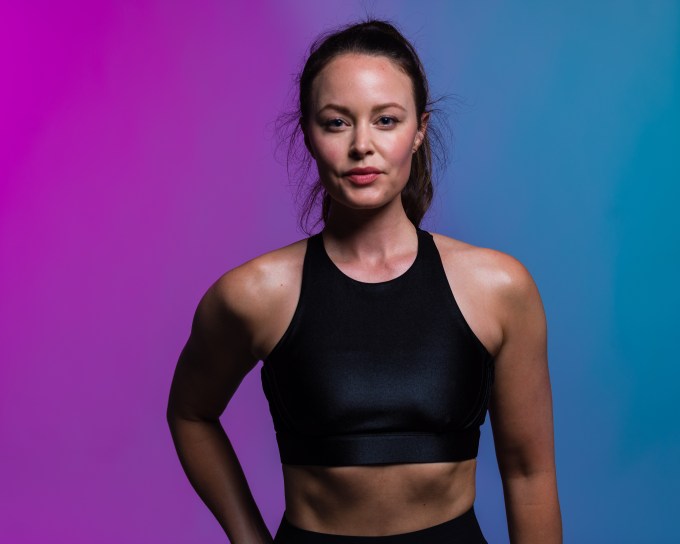
With a strategy and talent, now Vance needed to begin shooting classes. RiptLabs opened up its first production studio just down the street in SoMa at 6th and Bryant, although a significant number of shoots occurred in the startup’s Folsom St. office, too. Vance employed a two-camera setup against a drab gray-tone wood background for filming weight classes, giving Vance and his growing production crew the ability to pick and choose between shots they would stitch together into one cohesive class. Everything started feeling like it was coming together.
One final hurdle
It’s here that we hit one of the chief ironies of building a hardware startup: As a company gets closer to launch, it can actually become harder to fundraise. Strategic and technical risks suddenly transform into production and market risks. If the seed investors in RiptLabs had to bet on Orady, and the company’s Series A investors had to bet on it reaching product-market fit, then the Series B investors had to bet — with big dollars for the time — that the company would find traction among consumers, all without seeing the kind of extensive usage data typical of software startups.
Orady set out to raise RiptLabs’ Series B, an experience he claims was one of the hardest challenges to date.
“When you walk out of partner meetings, and eight of them have said ‘no,’ that’s hard,” he explains. “My team was working their butts off and were incredibly excited to launch [later that year.] But just being in a position where I just didn’t know if I was gonna be able to pull this off was hard. You’re not just potentially letting yourself down — it’s letting your team down.”
For all the negative responses, it only took one to eventually say “yes.” Orady managed to raise $30 million from Sapphire Ventures along with his existing investors Shasta, Mayfield and THVC.
With its final pre-launch tranche in hand, the company upgraded its San Francisco production studio and opened an additional studio in Los Angeles — a facility with a three-camera arrangement and a neon-lit minimalist set that gave off a more modern, polished vibe.
Orady also renamed RiptLabs to “Tonal” after working with two different marketing agencies, which went through three rounds of naming pitches before arriving at Tonal. (The second agency got the name during the second round.)
The newly christened Tonal would launch in August 2018 — roughly three-and-a-half years after Orady first saw that cable crossover machine at the gym. He had overcome his own resistance and corporate burnout, the resistance of wave after wave of investors, and the hesitancy of new employees joining a pre-launch startup.
Orady had emerged from these trials stronger and with a potentially compelling product, but the greatest resistance had yet to be confronted: the will of the market and the discerning consumers who may well balk at a $2,995 machine stuck to their walls.
To overcome that resistance would require a careful launch strategy, and that’s where our story turns next.
Millions of dollars and 3.5 years, and it all came down to this
Tonal EC-1 Table of Contents
- Part 1: Origins
- Part 2: Product launch
- Part 3: Community building
- Part 4: Competitive landscape and future
Also check out other EC-1s on Extra Crunch.
Updated March 30, 2021: Changed the name of Tonal’s original name from Ripped Labs to RiptLabs. Also clarified Ryan Vance’s history at Fitbit.
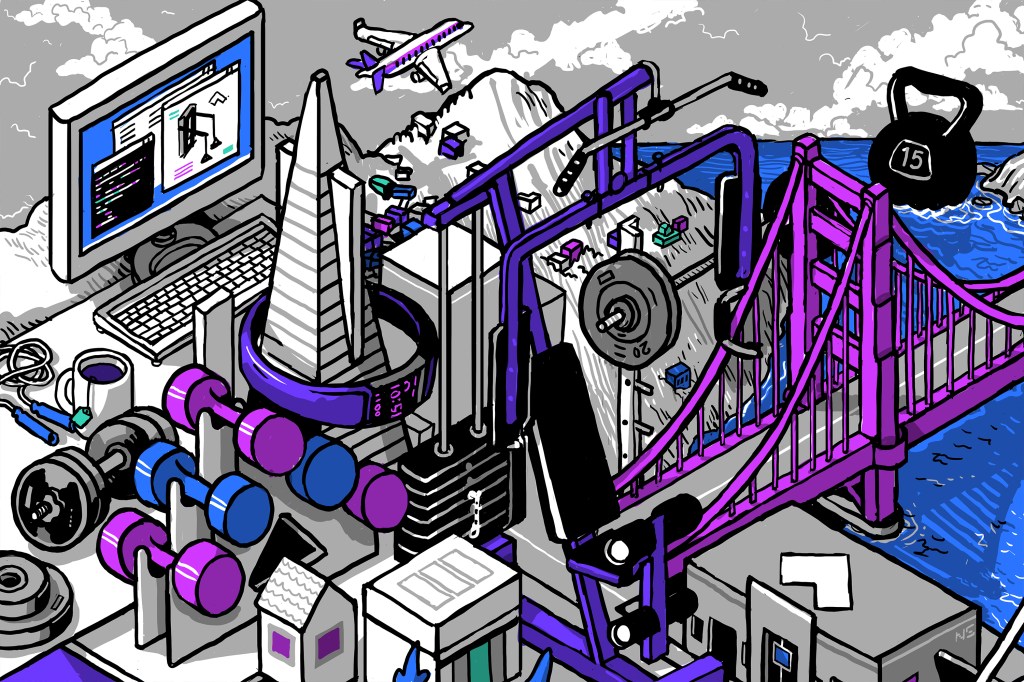






























Comment